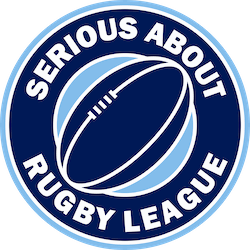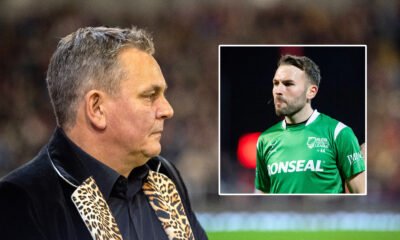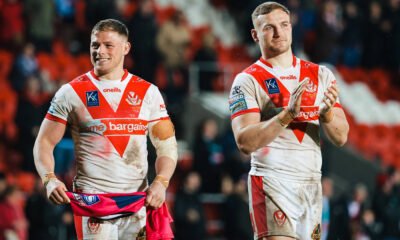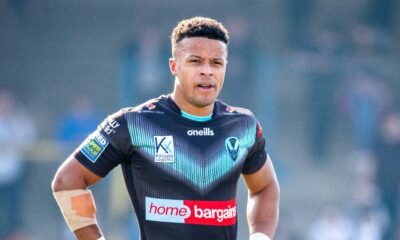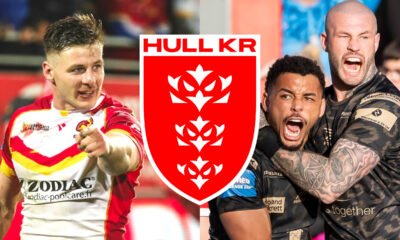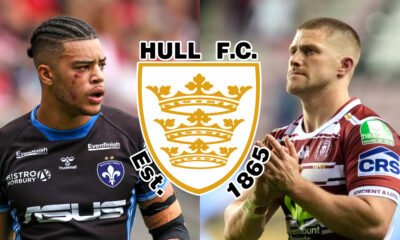
Many great players have played both rugby codes down the years, but who are the best of the best? Here are our top 10 in history…
10. Lote Tuqiri
Born in Fiji, Tuqiri moved to Australia when he was 15 and signed for the Brisbane Broncos three years later. He was exceptional in his first four years playing NRL and earned international honours for both Fiji and Australia. He soon attracted suitors from the 15-man code and signed for the Waratahs in 2003. The powerhouse winger was parachuted to the Wallabies side and played alongside other league recruits Mat Rogers and Wendell Sailor in the 2003 World Cup. After playing in another Rugby World Cup in 2007, Tuqiri left Australia to play for Leicester Tigers in 2009 before returning to league the following year with the Wests Tigers. He averaged more than a try every other game for Wests and became the first code-crosser to play test rugby league for Australia a second time after helping them win the 2010 Four Nations. After a brief spell back in union with Leinster, he ended his career in style by helping South Sydney Rabbitohs claim the 2014 NRL title – the game made famous by Sam Burgess playing on after breaking his cheekbone.
9. Mat Rogers
Despite excelling as a junior in the 15-a-side code, Rogers started his professional career in league with Cronulla in 1995. He played 129 times for the Sharks, scoring 75 tries, and is one of the most decorated players in the club’s history. He also played five times for the Maroons at the turn of the century, scoring five tries. Capped 11 times by the Green and Gold, the highlight of Rogers’ Kangaroos career was scoring 12 points in the 2000 World Cup Final against New Zealand. Like the aforementioned Tuqiri, Rogers was attracting interest from union and crossed codes in 2002 to sign for the Waratahs. He made his Wallabies debut alongside Wendell Sailor and played in the 2003 Rugby World Cup Final defeat to England. Rogers returned to the NRL with the Titans in 2007 and scored 31 tries in four seasons before retiring.

Rogers ended his professional career with a stint at the Gold Coast Titans. Credit: Scott Powick
8. Ray Price
Price started out playing union for Parramatta at 18 and made his Wallabies debut in 1974. He was persuaded to switch codes in 1976 to join the Parramatta Eels and was in the Kangaroos team by 1978. A year later he was awarded the Harry Sunderland trophy for the best player of the Australia-Great Britain series and was recognised as the best lock forward in the world for five years. Price finally got his hands on a premiership in 1981 as the Eels won the first of a hat-trick of titles. He backed up his Dally M Medal display by playing a big part in the Kangaroos’ invincible side of 1982. Price then became the first player to be awarded the ‘Order of Australia’ whilst still playing and finished his career at Wakefield in 1989 after three years out of the game.

Price was nicknamed ‘Mr Perpetual Motion’ for his hard, intimidating style of play. Credit: NRL Photos
7. Iestyn Harris
Harris started his career with Warrington in 1993 before a record-breaking £350,000 transfer to Leeds in 1997. He won the Man of Steel award in 1998 and lifted the Challenge Cup as Rhinos captain at Wembley in 1999. Already a fully-capped Great Britain international, Harris then captained Wales to the semi-final of the World Cup in 2000 before he made a very high profile switch to union to sign for Cardiff Blues. He was fast-tracked to the Wales international set-up and represented them at the 2003 World Cup in Australia. In 2004 Bradford granted his wish for a return to league after a bitter battle with former club Leeds. The Bulls won the Grand Final from third in 2005 and he went on to captain them as they beat Wests Tigers in the World Club Challenge the following year. He retired in 2009 after a season with Featherstone.
6. Israel Folau
Folau made his debut for Melbourne at the age of just 17, becoming the youngest player to ever score a try for the Storm. The 2007 season saw him win the NRL title as he broke Billy Slater’s record for tries in a rookie season (21). The unstoppable winger/centre became the youngest player ever to wear Green and Gold, making his debut against the Kiwis in 2007, scoring twice in a 58-0 win. Folau made his debut for the Maroons in 2008 and was named man of the match in the decider, before picking up the Dally M centre of the year award and receiving a call-up Australia’s World Cup squad. He left rugby league and spent three years playing Aussie Rules before a big-money move to rugby union. He played nearly 100 times for the Waratahs and made his debut for the Wallabies against the Lions in 2013. He is fourth on the all-time try-scorer list for Rugby Australia, having scored 32 tries in 62 appearances. After his well-publicised exit from the 15-man code, Folau made a controversial return to rugby league at the start of this year and has impressed in his three Super League games for Catalans to date.
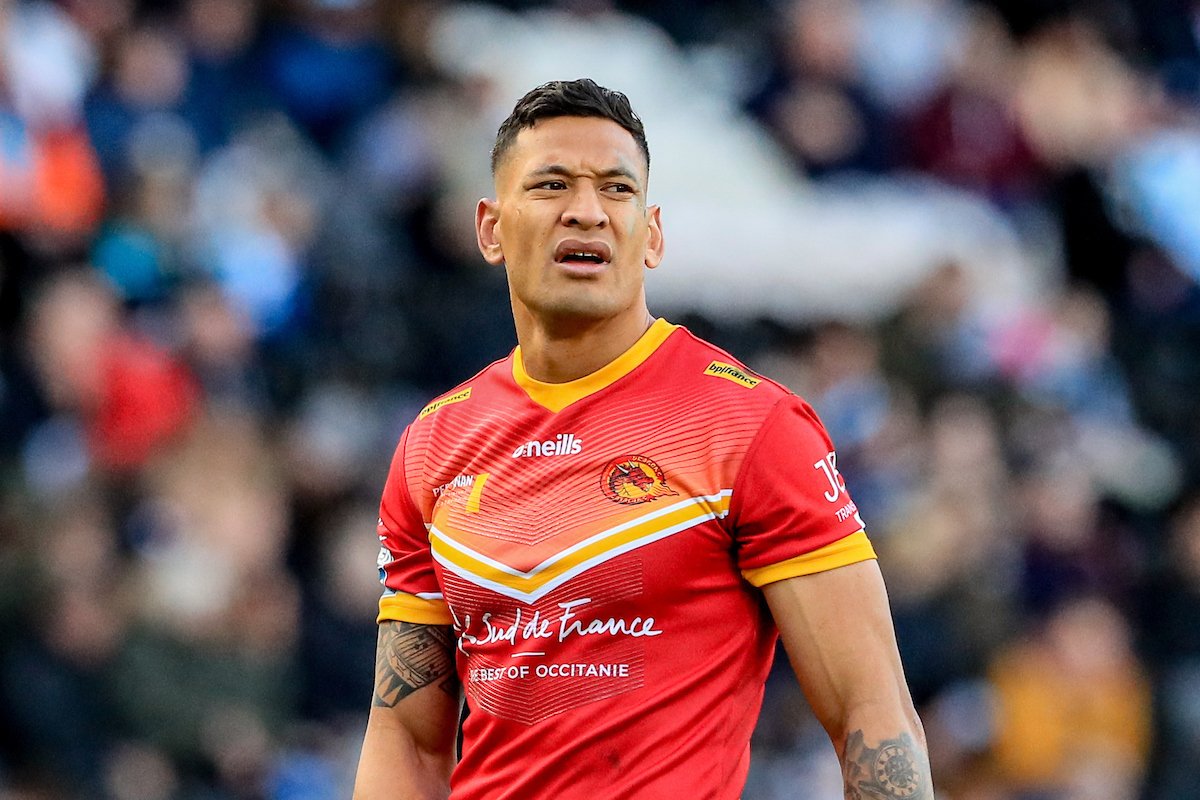
Folau signed for Super League side Catalans ahead of the the 2020 season. Credit: News Images
5. Jonathan Davies
Davies started in union and made his debut for Neath in 1982. Three years later ‘Jiffy’ made his debut for Wales and would go on to become arguably the greatest fly-half to pull on the famous red jersey. He helped his beloved home nation to the triple crown in 1988 before he was persuaded to switch codes and sign for Widnes a year later in a record deal. Davies was probably the highest profile player to join league from union since Dally Messenger nearly 80 years previous. In his first season he helped Widnes beat Canberra in the World Club Challenge and was soon in a Great Britain jersey. After a short spell with Canterbury in 1991, where he scored 100 points in only 14 games, the Welsh wizard transferred to local rivals Warrington in 1993 and was named Man of Steel a year later. He scored a famous try for the Lions in the 1994 Ashes before spending the remaining years of his career crossing between the codes, playing for Llanelli, Cardiff and the North Queensland Cowboys.
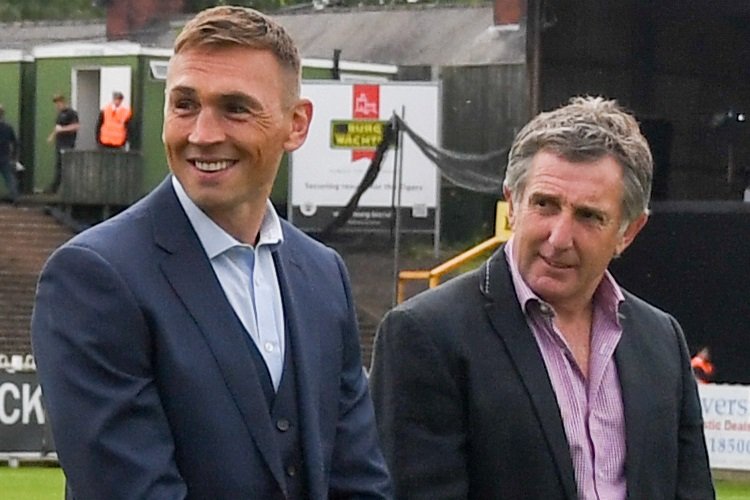
Davies (right) is now a BBC pundit for both rugby codes. Credit: News Images
4. Brad Thorn
Thorn won the Rugby World Cup, NRL, Super Rugby, Heineken Cup and even State of Origin in a trophy-laden career in both codes. The New Zealand-born forward was rookie of the year at the Broncos in 1994 and made his debut for the Maroons in the 1996 Origin series. A year later Thorn made his Kangaroos debut and helped the Broncos win the NRL title in 1998. By the turn of the century he was a stalwart in the Maroons side but was tempted away by the financial power of the 15-a-side game. He joined Super Rugby outfit Crusaders in 2001 and decided to play for the All Blacks in the 15-man code. He is only the second player, after Bill Hardcastle, to play for Australia in league and New Zealand in union. After returning to Brisbane, Thorn again lifting the NRL title in 2006 before going back to union in 2007. He would spend the remainder of his career in the code and won the Rugby World Cup on home soil with the All Blacks in 2011.
3. Sonny Bill Williams
Now a global megastar, Sonny Bill was signed by Canterbury Bulldogs as a 17-year-old and won the 2004 NRL title in his first full season. He made his Kiwis debut at 18 and shocked the rugby world by switching codes to sign for Toulon in 2008. Two years later Williams’ transfer to Super Rugby outfit Canterbury pushed him into the All Blacks setup and by 2011 he was a Rugby World Cup winner. At this point he was a national hero and the biggest rugby star on the planet. He signed for the Chiefs, via the Crusaders, in 2012 and added the Super Rugby title to his growing list of trophies – becoming only the fourth player to win both the Super Rugby and NRL. He switched back to the league in 2013 and another NRL title followed as he was named the Sydney Roosters player of the year. A Rugby League World Cup title evaded him before going back to union and helping the All Blacks retain the World Cup in 2015. In what is expected to be his last career move, SBW returned to league ahead of the 2020 season and signed a mega-money deal with the Toronto Wolfpack.
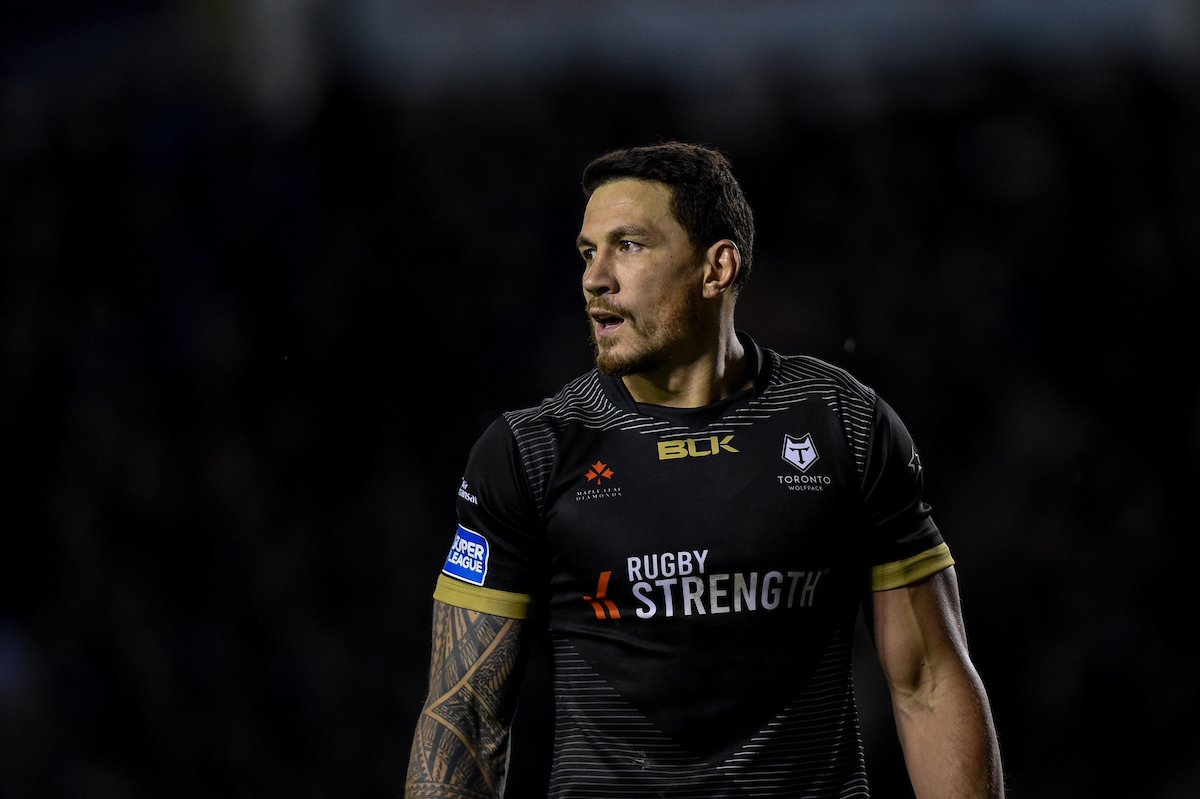
Williams latest move back to rugby league saw him join Canadian side Toronto Wolfpack. Credit: News Images
2. Jason Robinson
Robinson was part of a dominant Wigan side in the 90’s, winning his first Challenge Cup as a 19-year-old in 1993. He played in the Warriors’ famous win over the Brisbane Broncos in the 1994 World Club Challenge and won the Harry Sunderland Trophy after a match-winning performance in the first Super League Grand Final in 1998. He represented both Great Britain and England 19 times before his desire to represent his country at both codes led to him signing for Sale in 2000. Robinson became a national hero when he scored a try in helping England win the Rugby World Cup in 2003 and two years later he would represent the British and Irish Lions for a second tour. The speedster made history in 2006 when he became the first player to win Super League and the Rugby Premiership as Sale stormed to the title. A year on he almost added another Rugby World Cup before ‘Billy Whizz’ called time on a quite remarkable cross-code career.
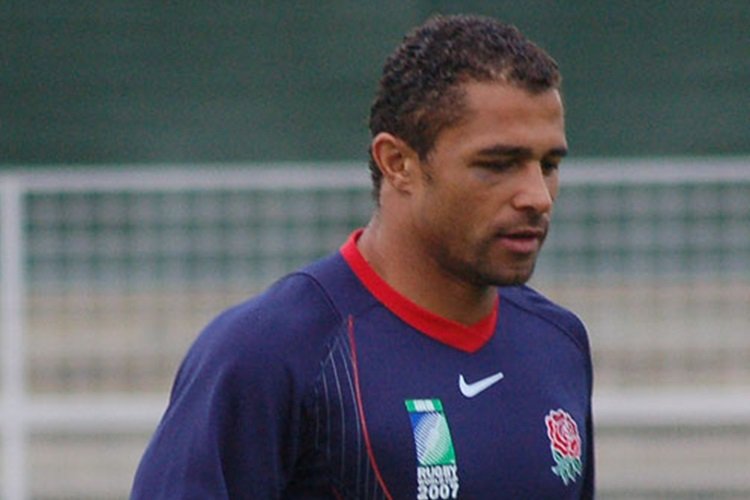
Robinson is arguably the greatest ‘modern day’ cross-code international.
1. Dally Messenger
The Master started his career in rugby union in 1905 for Eastern Suburbs and soon became a fan’s favourite with his clever style of play. He was picked for the New South Wales team in 1907 and played twice for Australia against the All Blacks in the same year. Messenger decided to defect to the professional ranks of rugby league in 1908 and the switch didn’t go down well with the suits at union. It wasn’t until the 21st century that his records were restored in the books of the New South Wales Rugby Union such was the fallout from his exit. Dally played in a rebel series against the All Golds and toured England with the New Zealand professional side in 1908, a tour which was replicated in 2008 in Rugby League’s centenary year. Often viewed as a pioneer for the growth of rugby league, Messenger is still arguably the sport’s greatest ever player and was even offered contracts by top British football clubs whilst touring with the Kangaroos in 1908. His legacy lives on as the award for the top player in the NRL is named after him and he is undoubtedly the first true superstar of either code. He was named on the wing in the all-time New South Wales team in 2008 and is immortalised with a statue outside the Sydney Football Stadium. His record of 32 points in one game for New South Wales has only recently been matched during the 2011 season where he scored 270 points in only 21 games. The furore that surrounded his switch from union to league will never be repeated as he had the ability to fill stadiums on his own. Messenger is without doubt the greatest ever cross-code international.
